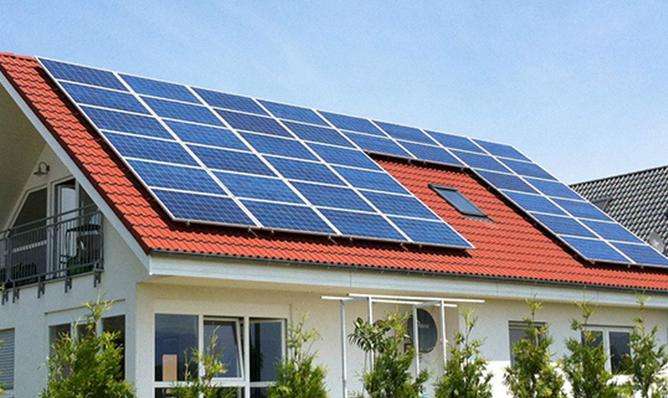The upper limit of the theoretical photoelectric conversion efficiency of silicon solar cells is about 33%.
Solar PV conversion efficiency calculation method:
System efficiency = battery module conversion efficiency X inverter efficiency X system loss.
Area X conversion efficiency X1000W/M2 = power.
That is:
The calculation method of solar cell modules is as follows: Rated power of the module in the STC state/(module area* 1000).
Taking for example a module with a rated power of 180 Wp, module dimensions of 1580 × 808 × 50 mm (length × width × thickness) and 72 cells of 125 × 125 mm packed in series, the efficiency of the module is: 180/(1.58×0.808×1000)=0.1410=14.10%.
Detailed information:
The advantages and disadvantages of monocrystalline and polycrystalline solar panels:
Monocrystalline advantages of crystalline silicon solar panels: high photoelectric conversion efficiency and good stability; the photoelectric conversion efficiency of monocrystalline silicon solar cells is about 15%, the highest reaching 24%, which is currently the highest photoelectric conversion efficiency among all types of solar cells. . Disadvantages: The production cost is so high that it cannot be widely and commonly used in large quantities.
Advantages of polycrystalline silicon solar panels: higher efficiency and lower cost. In terms of production cost, it is cheaper than monocrystalline silicon solar cells. The material is easy to manufacture, saves energy, and the overall production cost is low, so it has been widely developed.loped. In addition, the lifespan of polycrystalline silicon solar cells is shorter than that of monocrystalline silicon solar cells.
Disadvantages: The photoelectric conversion efficiency of polycrystalline silicon solar cells is much lower, and its photoelectric conversion efficiency is about 12%.
Baidu Encyclopedia - Solar Cells
How to calculate the conversion efficiency of solar cells
(1) The power of 8 square meters is of 8,000, 120 V times 10 A = 1,200 watts = 1.2 kW
The efficiency of solar cells in converting solar energy into electrical energy is 1.2/8*100% = 15%
(2) 1200 watts conversion The mechanical power generation efficiency is 75%, i.e. 900 watts = Joules/second = Newton * meters/second The resistance is 150 N , then the speed of movement = 900/150 = 6 meters/seconds = 21.6 kilometers. /hour
What does sst meanr2+?
First test the output voltage and current of the solar panel under test under standard light intensity:
1. intensity refers to: AM1.5,1000W/square meter, module temperature: 25 degrees, it is better to use a special photovoltaic solar tester for testing.
2. Parameters to test: Pw, Vop, Iop, Voc, Isc.
3. Divide the power of the solar panel by the area of the solar panel, then divide it by 1000 to get the efficiency.
Assumption: The power of the solar panel is 5W. The surface area is: 0.03 square meters,
Then its efficiency is: 5/0.03/1000=0.167=16.7%,
That is- say it will use 16% of the solar energy of 1000W per square meter 0.7% is converted into electrical energy.
sstr2+ is a solar cell efficiency indicator, indicating the conversion efficiency of the cell.
In solar cells, the conversion efficiency ofsolar energy to electrical energy is a very important indicator, usually expressed as a percentage. sstr2+ means that the conversion efficiency of solar cells is more than 20%, which is more efficient than ordinary solar cells. sstr2+ solar cells are typically manufactured using advanced materials and technologies to provide higher energy conversion efficiency and longer lifespan.














